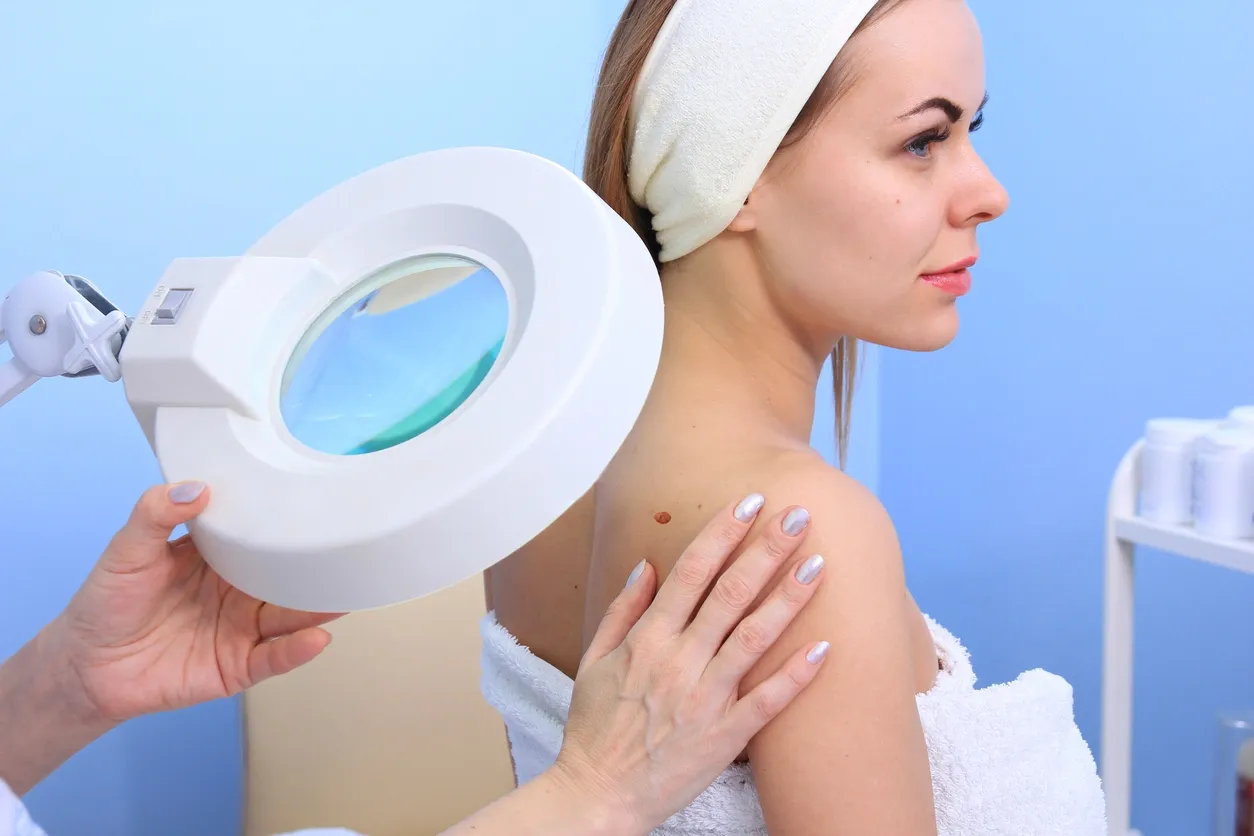Mole Mapping and Monitoring: Keeping Track of Skin Changes

Regular monitoring of moles and skin changes is crucial for skin health, particularly in early skin cancer detection. Mole mapping is an advanced method that helps track these changes over time, providing a comprehensive record that can be vital for diagnosis and treatment. In this article, we’ll explore the importance of mole mapping, how the process works, and how it can be essential in maintaining healthy skin.
Understanding the Importance of Mole Mapping
Why Monitor Moles?
Moles are common skin growths that most people have. While the majority are benign, some can develop into melanoma, the most serious type of skin cancer. Early detection of suspicious changes in moles can lead to prompt treatment and significantly increase the chances of a successful outcome.
Regular skin examinations, both self-checks and professional evaluations, are essential. However, mole mapping offers a more detailed approach by creating a visual record of your skin, allowing for precise monitoring over time.
The Role in Skin Cancer Prevention
Mole mapping enhances early detection by:
- Identifying New Moles: Tracking the appearance of new moles that may require attention.
- Monitoring Changes: Detecting subtle changes in size, shape, color, or texture of existing moles.
- Providing Baseline Imagery: Establishing a reference point for future comparisons.
By utilizing mole mapping, dermatologists can more effectively identify potential issues before they become serious, emphasizing the importance of this tool in preventive skin care.
How Mole Mapping Works
The Procedure Explained
Mole mapping involves taking high-resolution images of your entire skin surface. As a board-certified dermatologist LA residents rely on, we use state-of-the-art imaging technology to capture detailed photographs that serve as a baseline for future comparisons.
- Initial Consultation: A thorough skin examination is conducted, and any concerns are discussed.
- Image Capture: Full-body photographs are taken systematically to document all areas.
- Digital Analysis: Specialized software analyzes moles and lesions, highlighting any atypical.
- Reporting: A comprehensive report is generated, and you will review any findings.
Follow-up and Ongoing Monitoring
Regular follow-up appointments are scheduled to update the images and monitor any changes. This ongoing process allows for detecting abnormalities that might not be noticeable during self-examinations.
Identifying Suspicious Moles: The ABCDE Rule
While mole mapping provides a professional assessment, knowing the signs of suspicious moles is important. The ABCDE rule is a helpful guideline:
- Asymmetry: One half of the mole doesn’t match the other half.
- Border: Edges are irregular, ragged, or blurred.
- Color: Uneven shades of brown, black, tan, red, white, or blue.
- Diameter: Larger than 6mm (about the size of a pencil eraser).
- Evolving: Changes in size, shape, color, or symptoms like itching or bleeding.
If you notice any of these signs, it’s essential to consult with a dermatologist promptly. Regular mole mapping complements self-checks by providing a detailed and accurate record over time.
Benefits of Mole Mapping
Early Detection and Peace of Mind
One of the primary benefits of mole mapping is the early detection of skin cancer, particularly melanoma. By identifying changes early, treatment can begin sooner, increasing the likelihood of successful outcomes.
Additionally, having a comprehensive record provides peace of mind. Knowing that your skin is closely monitored allows you to focus on other aspects of your health and well-being.
Personalized Skin Care
Mole mapping enables a personalized approach to skincare. As medical dermatologists, we tailor our recommendations based on your skin type, history, and risk factors, ensuring you receive the most effective care.
Complementing Other Treatments
Mole mapping can be integral to overall skin health management for individuals undergoing laser therapies or managing conditions such as psoriasis and eczema.
Integrating Mole Mapping into Your Skin Care Routine
Scheduling Regular Appointments
Incorporating mole mapping into your routine is simple. Regular appointments, typically once a year, allow for effective monitoring. If you have a higher risk of skin cancer, more frequent visits may be recommended.
Self-Examinations Between Visits
Between professional mappings, continue performing monthly self-examinations. Being familiar with your skin helps you notice any changes requiring professional evaluation.
Read our Preventing and Treating Sun Damage article for tips on conducting self-examinations and protecting your skin.
When to Consider Mole Mapping
High-Risk Individuals
Mole mapping is particularly beneficial if you:
- Have numerous moles or atypical moles.
- Have a personal or family history of skin cancer.
- Experience frequent sun exposure or have had severe sunburns.
- Have fair skin, light hair, and light eyes.
General Recommendation
Even if you don’t fall into a high-risk category, mole mapping is a proactive step in maintaining skin health. It provides a thorough record that can be invaluable over time.
Frequently Asked Questions
Is mole mapping suitable for everyone?
Answer: Yes, mole mapping is beneficial for individuals of all skin types and ages. It is especially recommended for those with multiple moles or higher risk factors for skin cancer.
How long does the mole mapping process take?
Answer: The initial appointment typically takes about an hour, including consultation, image capture, and review. Follow-up visits are usually shorter.
Will my insurance cover mole mapping?
Answer: Coverage varies by insurance provider. It’s advisable to check with your insurer to determine if mole mapping is included in your plan.
Can mole mapping detect all types of skin cancer?
Answer: Mole mapping is a valuable tool for early detection of melanoma and other skin cancers. However, it should be part of a comprehensive skin care approach that includes professional evaluations and self-examinations.
How does mole mapping differ from a regular skin exam?
Answer: Mole mapping provides a detailed visual of your skin, allowing for precise monitoring of changes over time. Regular skin exams involve a physical examination without the detailed imaging component.
Taking the Next Step with Dr. Janet Vafaie
We are committed to providing comprehensive skin care services, including advanced mole mapping. Our experienced team utilizes cutting-edge technology to ensure accurate monitoring and early detection of potential issues.
By integrating mole mapping with our other services, such as Medical Dermatology and Dermatologic Surgery, we offer a holistic approach to skin health.
Contact us today to schedule your mole mapping appointment and take a proactive step in safeguarding your skin health.
External Resources
- Skin Cancer Foundation: The ABCDEs of Melanoma
For more insight into skin health and preventive care, visit our Tips & Articles page.
